
To fully experience a country means finding ways to be a native, even if just for a day, a week, or longer. One way to achieve this is by sampling the unique, traditional dishes that each country has to offer.
While small compared to many of its neighbors, the South American country of Ecuador is big on culture and food. Many of their traditional dishes may fall outside your normal comfort zone, but you may just find one or two that introduce you to a new, favorite recipe you’ll want to eat over and over again.
Ecuadorian food dishes range as wide as the three distinct regions found in the country, which include the Amazon jungle, the Andean highlands, and the Pacific Coast (including the Galápagos Islands).
Here are the 11 traditional dishes you must try while on vacation in Ecuador.
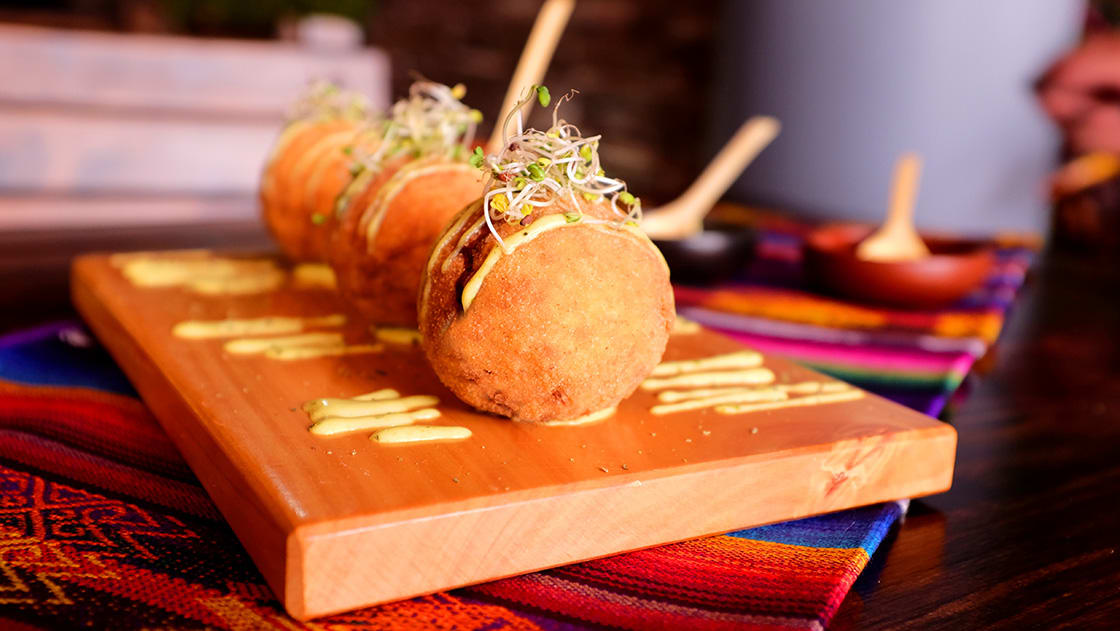
Balls Made Of Green Banana With Cheese
Considered a national dish of the country, the Ecuadorian cuisine of Bolon de Verde resembles a baseball-sized ball of dough on the outside. The outer layers are made of mashed green plantains, while the inside contains pork (or other meat) or cheese. Once formed, the ball is pan-fried to a golden hue and served up hot. Try this dish for breakfast or even brunch. Quite filling, one of these can sustain you for a full day of sightseeing or travel anywhere in the country.
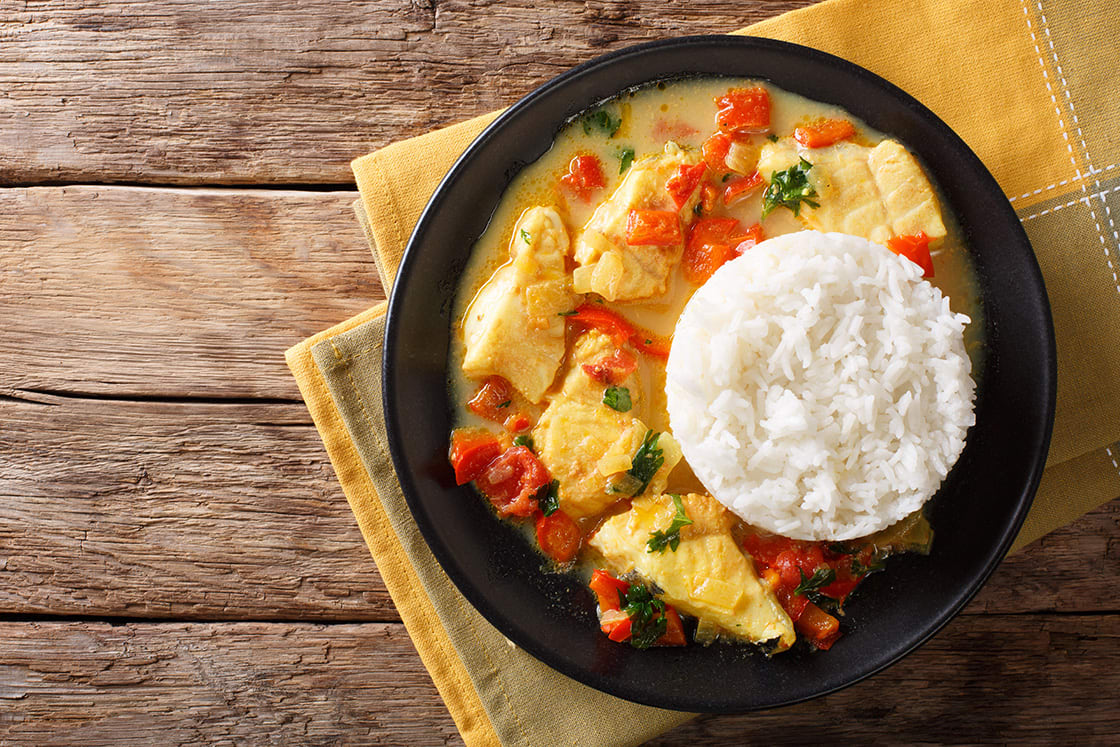
Pescado Encocado Or Fish With Coconut Sauce
This traditional dish of fish in a unique coconut sauce is not to be missed. The most common fish used in the recipe is Covina, a highly prized, wild-caught fish sought in all of South America. The coastal provinces, in particular, take great pride in this dish, serving it simply with white rice and fried plantains.
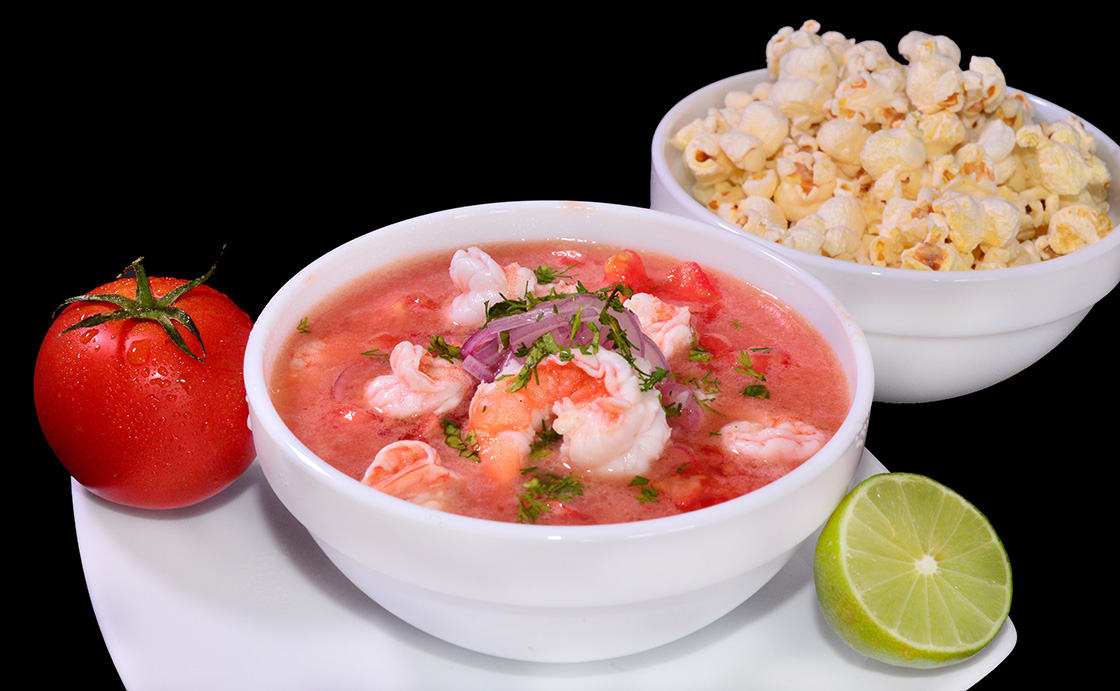
Shrimp Ceviche From Ecuador
While ceviche is not unique to Ecuador, the way it is prepared here makes it an undeniable favorite among residents and visitors alike and an Ecuador famous food. It’s the citrus marinating juices that define its unique style. Consisting of raw shrimp or other seafood from the abundant Ecuadorian coastal waters, the citrus juice allows it to maintain the most amount of flavor. Expect to find the best ceviche in restaurants located in the seaport of Guayaquil. Ceviche carts in other areas, like Montanita, are also available.

Encebollado Fish Stew Served With Banana Chips And Lemon Typical
From the Ecuadorian coast to the Andes, the popular dish of Encebollado de Pescado is another must-try. This seafood soup starts with a fish-based broth, usually albacore tuna, and adds in boiled yuca, pickled red onion, tomato, a squeeze of lime juice, and cilantro. Also called chuchaqui, the soup is served with strips of fried green plantains, toasted corn (tostado), or various breads—a perfect meal by itself or paired with a side salad.

Traditional Ecuadorian Dish Grilled Guinea Pig Spread Out
Prepare yourself to move past your initial impressions, as Cuy Asado, or roasted Ecuador guinea pig food treat, is a highly acclaimed delicacy in Ecuador. You can enjoy a whole cuy or start out with a single or quarter sampling. It is commonly accompanied by a side of corn or potatoes and served with chile and salsa, examples of typical Ecuadorian food.
One of the best locations for ordering cuy Ecuadorian food is the city of Cuenca nestled among the Andes mountains in southern Ecuador. Here you’ll find high-end restaurants to roadside food stalls near the market serving up this dish. Another popular place for cuy is Banos, so be sure to try it while enjoying the adventurous activities in this area.
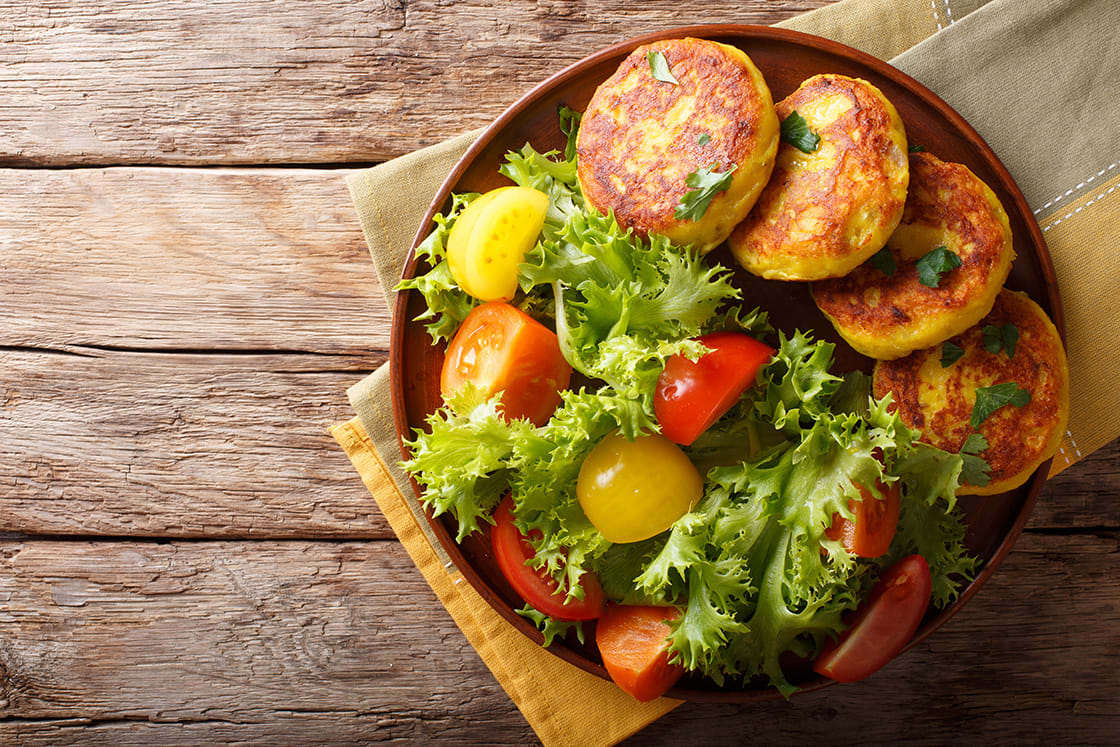
Freshly Prepared Potato Pancakes, Served With Fresh Salad
You’ll undoubtedly fall in love with this popular food in Ecuador, adored by both Ecuadorians and travelers. Llapingachos consists of a potato patty stuffed with cheese and cooked to perfection on a griddle, achieving a golden-brown crust.
While many consider Llapingachos as a side dish for a pork meal, including chorizo, fried egg, avocado slices, and a salad, you can enjoy one on its own also. These are particularly good choices for the vegetarians in your group. Find them anywhere in the country and in particular at the Banos Market.
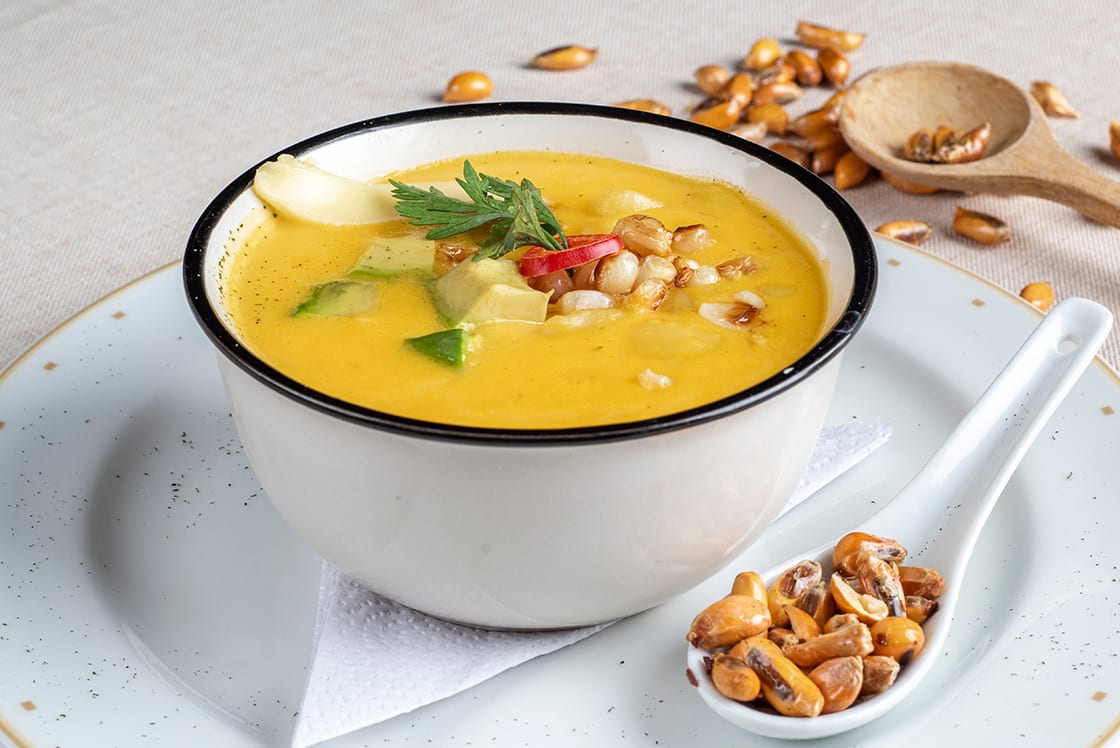
Delicious “Locro De Papa” An Ecuadorian Gastronomic Tradition
Ecuador is known for its traditional stew dishes, and one to try from the highland region is Locro de Papa. This gastronomical potato stew often contains cheese, onions, garlic, and cumin in addition to the potatoes. The key, however, is the annatto, a spice found in South America that adds its own unique flavor. Expect a delicious creamy consistency with a side of avocado and toasted corn.
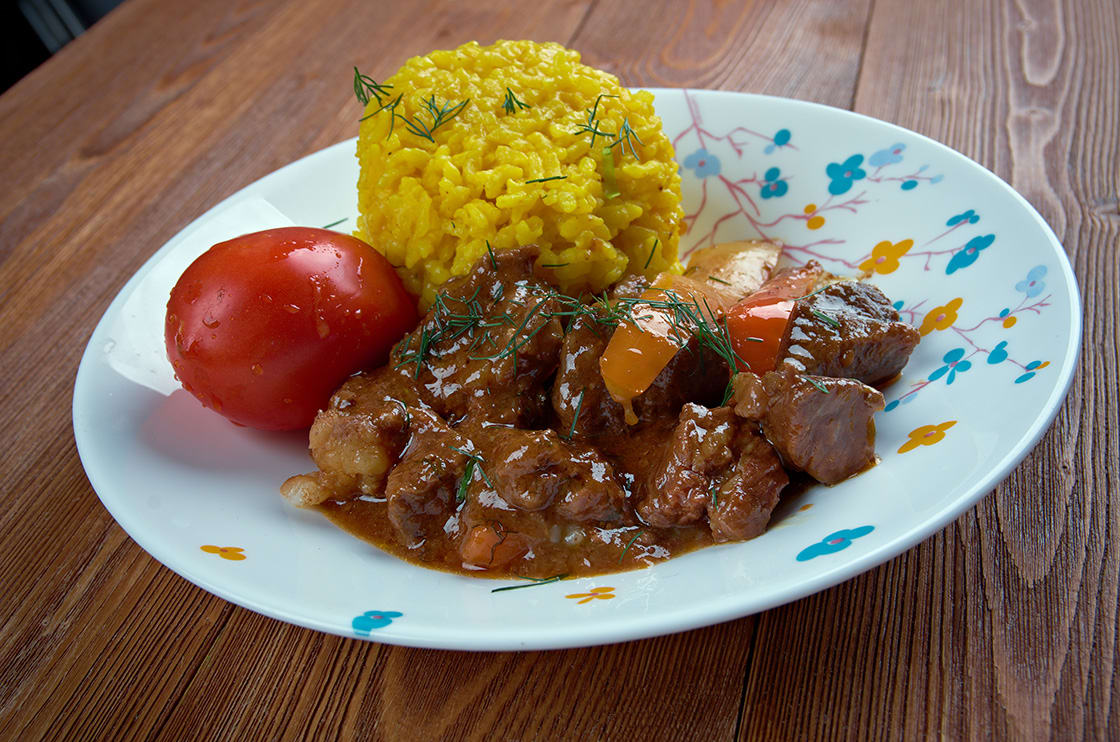
Seco De Chivo, Ecuadorian Stew
For a traditional stewed dish, try Seco de Chivo with its main ingredient of goat meat. You can also select beef or chicken versions. Whichever meat you choose, the stew consists of it along with tomatoes, onions, naranjilla (tasting similar to a lemon and pineapple combined), cane sugar, cilantro, oregano, cumin, garlic, and beer. You can find this dish in all regions of Ecuador, and it is usually served with rice, avocado, side salad, and fried plantains.
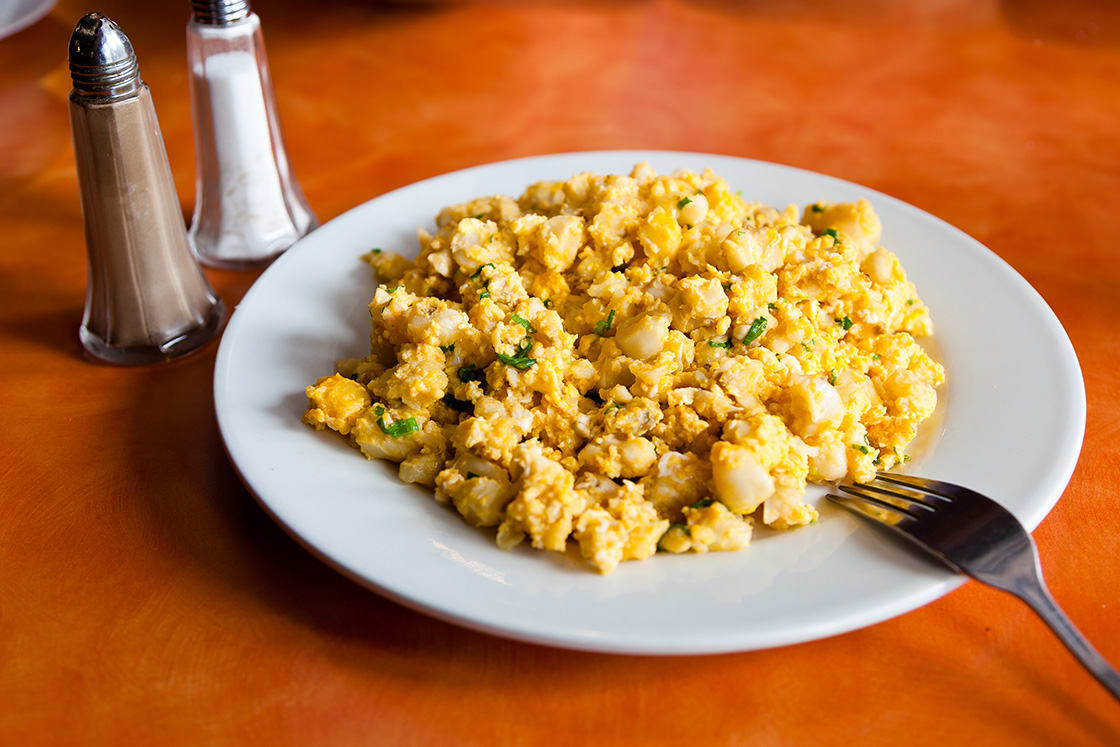
“Mote Pillo” A Variety Of Corn Cooked And Seasoned With Eggs
A traditional Ecuadorian food dish enjoyed in the highlands, including Cuenca, is Moto Pillo. This simple dish consists of mote, which is cooked mature corn, and added to scrambled eggs to create a delicious meal to enjoy wherever you are. This is sure to become a staple as you explore the region and enjoy the fun and scenery it offers.
While exploring the Amazon region of Ecuador, try the traditional stew of Uchumanga. This versatile stew consists of whatever river fish is caught that day by local fishermen. With the goal of wasting nothing, the fish’s intestines are included during the stewing process.
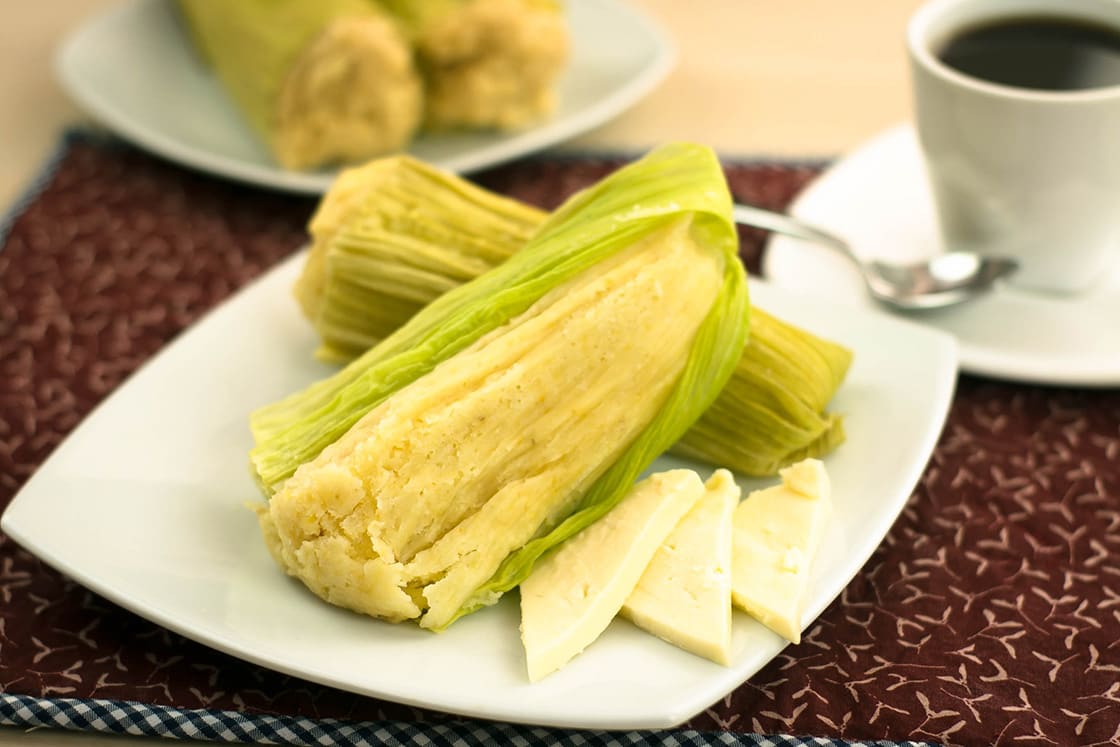
Ecuadorian Traditional Dish Called Humitas; Made With Corn And Cheese
For a truly authentic culinary experience, reach for a Humita. These simple Ecuadorian dishes resemble tamales. The steamed masa and corn are enveloped in a banana leaf and can be sweet or salty, although salty is the most common. Other ingredients may include eggs, onions, or cheese. Buy several of these from food push carts throughout the country.
There you have it then, 11 of the best traditional dishes to try while in Ecuador. While many of these dishes may fall outside your normal comfort zone, you won’t want to miss out on such a spectacular cultural experience. You might even be amazed to discover all that you’ve been missing when it comes to incredible South American meals.
So, which Ecuadorian food dish will become your new favorite?
While Rainforest Cruises aim to provide accurate and up-to-date information, we make no representations as to the accuracy or completeness of any information herein or found by following any link on this site. Rainforest Cruises cannot and will not accept responsibility for any omissions or inaccuracies, or for any consequences arising therefrom, including any losses, injuries, or damages resulting from the display or use of this information.




